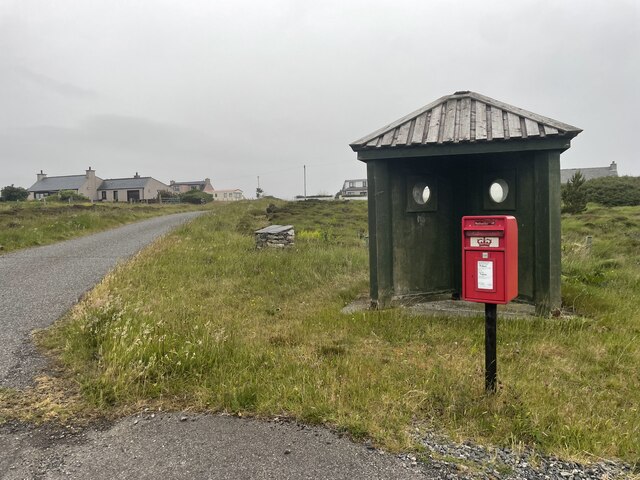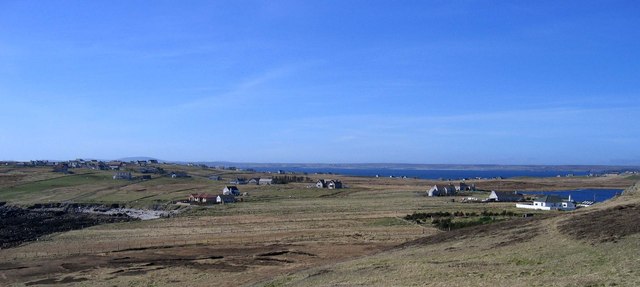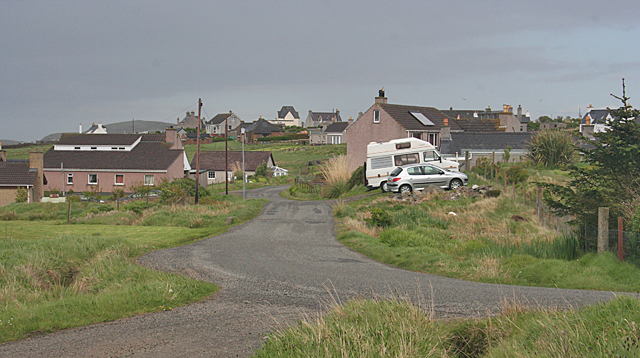Geodha Ghàraidh
Coastal Feature, Headland, Point in Ross-shire
Scotland
Geodha Ghàraidh

Geodha Ghàraidh is a picturesque coastal feature located in Ross-shire, Scotland. It is a stunning headland that juts out into the North Atlantic Ocean, forming a prominent point along the rugged coastline. The name Geodha Ghàraidh translates to "Gàraidh Bay" in English, reflecting its natural bay-like formation.
This coastal feature is known for its dramatic cliffs and breathtaking views. The rugged terrain is made up of rocky outcrops that have been shaped by the relentless power of the ocean waves over centuries. These cliffs provide a nesting site for various seabird species, including fulmars and gulls, making it a haven for birdwatchers and nature enthusiasts.
Geodha Ghàraidh offers visitors the opportunity to experience the raw beauty of the Scottish coastline. The headland provides panoramic views of the surrounding sea, with the Isle of Skye visible in the distance on clear days. The crashing waves and the sound of seabirds create a serene and peaceful atmosphere, making it an ideal spot for those seeking solitude and tranquility.
Access to Geodha Ghàraidh is relatively easy, with a well-defined footpath leading to the headland. Visitors can enjoy leisurely walks along the coastline, exploring the rugged landscape and taking in the breathtaking vistas. The area is also popular for fishing, with anglers often casting their lines from the cliffs.
Overall, Geodha Ghàraidh is a captivating coastal feature that showcases the raw beauty of Scotland's coastline. Its dramatic cliffs, stunning views, and abundant wildlife make it a must-visit destination for nature lovers and those seeking an escape into the untamed wilderness.
If you have any feedback on the listing, please let us know in the comments section below.
Geodha Ghàraidh Images
Images are sourced within 2km of 58.241501/-6.2055361 or Grid Reference NB5335. Thanks to Geograph Open Source API. All images are credited.









Geodha Ghàraidh is located at Grid Ref: NB5335 (Lat: 58.241501, Lng: -6.2055361)
Unitary Authority: Na h-Eileanan an Iar
Police Authority: Highlands and Islands
What 3 Words
///reverted.used.precautions. Near Stornoway, Na h-Eileanan Siar
Nearby Locations
Related Wikis
Shulishader
Shulishader (Scottish Gaelic: Siadar an Rubha) is a small village with a population of around 120 people in Point, Outer Hebrides on the Isle of Lewis...
Flesherin
Flesherin (Scottish Gaelic: Na Fleisirean) is a small village on the Point peninsula of the Isle of Lewis in the Outer Hebrides. Located near Portnaguran...
Broker, Lewis
Broker (Scottish Gaelic: Brocair) is a small hamlet next to the village of Portvoller and Portnaguran on the Eye Peninsula located on the east side of...
Aird, Lewis
Aird (Scottish Gaelic: Àird an Rubha) is a village in the Scottish council area of Eileanan Siar (Western Isles). It is located on the Eye Peninsula on...
Nearby Amenities
Located within 500m of 58.241501,-6.2055361Have you been to Geodha Ghàraidh?
Leave your review of Geodha Ghàraidh below (or comments, questions and feedback).










